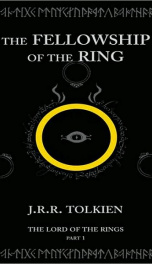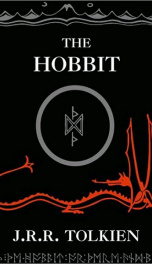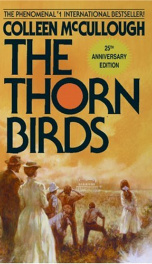Strachey Giles Lytton

Giles Lytton Strachey (pronounced /ˈdʒaɪlz ˈlɪtən ˈstreɪtʃɪ/; 1 March 1880 – 21 January 1932) was a British writer and critic. He is best known for establishing a new form of biography in which psychological insight and sympathy are combined with irreverence and wit. His 1921 biography Queen Victoria was awarded the James Tait Black Memorial Prize. Strachey was born on 1 March 1880, at Stowey House, Clapham Common, London, the fifth son and the eleventh child of Lieutenant General Sir Richard Strachey, an officer in the colonial British armed forces, and his 2nd wife, the former Jane Grant, who became a leading supporter of the women's suffrage movement. He was named "Giles Lytton" after an early sixteenth-century Gyles Strachey and the first Earl of Lytton, who had been a friend of Richard Strachey's when he was Viceroy of India in the late 1870s. The Earl of Lytton was also Lytton Strachey's godfather.[1] The Stracheys had thirteen children in total, ten of whom survived to adulthood, including Lytton's sister Dorothy Strachey. When Lytton was four years old, the family moved from Stowey House to 69 Lancaster Gate, north of Kensington Gardens.[2] This would be their home until Sir Richard Strachey retired twenty years later.[3] Lady Strachey was an enthusiast for languages and literature, making her children perform their own plays and write verse from early ages. She thought that Lytton had potential to become a great artist so she decided that he would receive the best education possible in order to be "enlightened".[4] By 1887 he had begun the study of French, a culture he would admire during his entire life.[1] Strachey was educated at a series of schools, beginning with one at Parkstone, Dorset. This was a small school with a wide range of after class activities, where Strachey would exceed the other students' acting skills, being particularly convincing when portraying female parts. He would even tell his mother how much he liked dressing as a woman in real life so as to confuse and entertain others.[5] Lady Strachey decided on 1893 that her son should start getting a more serious education, sending him to the Abbotsholme School in Rocester, Derbyshire where students were required to do manual work on a daily basis. Strachey's fragile physique couldn't take it and after few months he was transferred to Leamington College, where he would be victim of savage bullying.[1][6] Sir Richard was tired of his son's delicate personality so he told him to "grin and bear the petty bullying".[7] Strachey did eventually adapt to the school's life, becoming one of its best students. His health also seemed to improve during the three years he spent at Leamington, although various illnesses continued to plague him.[8] When in 1897 Strachey turned 17, Lady Strachey decided that her son was ready to leave school and go to university, but because she thought he was yet too young for Oxford she decided that he should first attend a smaller institution - the University of Liverpool. At Liverpool Strachey befriended his Professor of Modern Literature, Walter Raleigh, who, besides being his favourite lecturer, also became the most influential figure in his life before he went up to Cambridge. In 1899 Strachey took the Christ Church scholarship examination, wanting to get into Oxford's Balliol. The examiners determined that Strachey's academic achievements were not remarkable, plus they were struck by his "shyness and nervousness".[9] They recommended Lincoln College as a more suitable institution for Strachey, an advice that Lady Strachey took as an insult, deciding then that her son would attend Cambridge's Trinity College instead.[10] Strachey was admitted as Pensioner at Trinity College, Cambridge, on 30 September 1899.[11] He became an Exhibitioner in 1900 and a Scholar in 1902. He won the Chancellor's Medal for English Verse in 1902 and was given a B.A. degree after he had won a second-class in the History Tripos in June 1903. He did not, however, take a leave of Trinity but remained there until October 1905 to work on a thesis which he hoped would gain him a Fellowship.[1] Strachey was often ill and had to leave Cambridge repeatedly in order to recover from the palpitations that would subdue him.[12] The Cambridge period was a happy and productive one in Strachey's life. Among the freshmen at Trinity there were three with whom Strachey soon became closely associated: Clive Bell, Leonard Woolf and Saxon Sydney-Turner. Together with one undergraduate, A. J. Robertson, the five students formed a small society called "The Midnight Society" which, in the opinion of Clive Bell, formed the source of the Bloomsbury Group.[13] Strachey also belonged to the "Conversazione Society," the famous "Cambridge Apostles" to which Tennyson, Hallam, Maurice, and Sterling had once belonged. The Cambridge period was also one in which Strachey was highly prolific in writing verse, much of which has been preserved and some of which was published at the time. At Cambridge Strachey also became acquainted with other men who would greatly influence him like G. Lowes Dickinson, John Maynard Keynes, Walter Lamb (brother of painter Henry Lamb), George Mallory, Bertrand Russell, and G. E. Moore. Moore's philosophy, with its assumption that the summum bonum lies in achieving a high quality of humanity, in experiencing delectable states of mind, and in intensifying experience by contemplating great works of art, was a particularly important influence.[1] In the summer of 1903 Strachey applied for a position in the Education Department of the Civil Service. Even though the letters of recommendation written for him by those under whom he had studied showed that he was held in high esteem by those at Cambridge, he failed to get the appointment and decided to try for a fellowship in Trinity College.[1] He spent from 1903 to 1905 writing his 400-page thesis on Warren Hastings, which wasn't very well received among the scientists of his time.[1] When in the autumn of 1905 he left Trinity College, his mother assigned him a bed-sitting room at 69 Lancaster Gate. After the family moved to 67 Belsize Gardens in Hampstead and later to another house in the same street, he was assigned bed-sitters.[1] But, as he was about to turn 30, family life started irritating him, and he started traveling into the country more often, supporting himself by writing reviews and critical articles for The Spectator and other periodicals. About 1910-11 he spent some time at Saltsjöbaden, near Stockholm in Sweden. In this period he also lived for a while in a cottage on Dartmoor and about 1911-12 spent a whole winter at East Ilsley on the Berkshire Downs. It would be during this time that he decided to grow a beard, which would become his most characteristic feature.[1] On 9 May 1911, he would write to his mother: "The chief news is that I have grown a beard! Its color is very much admired, and it is generally considered extremely effective, though some ill-bred persons have been observed to laugh. It is a red-brown of the most approved tint, and makes me look like a French decadent poet—or something equally distinguished."[14] In 1911, H. A. L. Fisher, onetime president of the British Academy and of the Board of Education, was in search of someone to write a short, one-volume survey of French literature. Fisher had read one of Strachey's reviews ("Two Frenchmen", Independent Review (1903)) and asked him to write a sketch of French literature in fifty thousand words, giving him J. W. Mackail's 1909 Latin Literature as a model.[1] Landmarks in French Literature, dedicated to "J[ane] M[aria] S[trachey]," his mother, was published on 12 January 1912. Despite almost a full column of praise in its honor in the The Times Literary Supplement of 1 February and sales, that by April 1914, had reached nearly 12,000 copies in the British Empire and America, the book did not bring Strachey either the fame or the money which he so badly needed.[1] Soon after the publication of Landmarks, Strachey's mother and his friend Harry Norton[15] each provided him with £100 which, together with earning from the Edinburgh Review and from other periodicals, made it possible for him to rent a small, thatched cottage called "The Lacket" outside the village of Lockeridge, near Marlborough in Wiltshire. Here he established himself until 1916. Here also he wrote the first three parts of Eminent Victorians.[1] Strachey's theory of biography was now fully developed and mature. He was being greatly influenced by Dostoevsky, whose novels Strachey had been reading and reviewing as they appeared in Constance Garnett's translations. The influence of Freud would also be important on Strachey's later works, most notably on Elizabeth and Essex.[1] In 1916 Lytton Strachey was back in London living with his mother at 6 Belsize Park Gardens, Hampstead, whence she had now moved. In the late autumn of 1917, however, his brother Oliver and his friends Harry Norton, John Maynard Keynes, and Saxon Sydney-Turner agreed to pay the rent on "The Mill House" at Tidmarsh, near Pangbourne, Berkshire. After the success of Eminent Victorians, published on 9 May 1918, he needed no help from the outside. He continued to live at Tidmarsh until the proceeds from Queen Victoria (1921) made it possible for him to buy Ham Spray House near Marlborough, Wiltshire, to which he moved in July 1924, and which was his home for the rest of his life.[1] At Cambridge he had become close friends with non-Apostles Thoby Stephen and Clive Bell, and they, together with sisters Vanessa and Virginia Stephen (later Bell and Woolf respectively), eventually formed the Bloomsbury group. From 1904 to 1914 Strachey contributed book and drama reviews to The Spectator magazine. During World War I he applied for recognition as a conscientious objector, but in the event was granted exemption from military service on health grounds. He spent much time with like-minded people such as Lady Ottoline Morrell and the 'Bloomsberries'. His first great success, and his most famous achievement, was Eminent Victorians (1918), a collection of four short biographies of Victorian heroes. This work was followed in the same style by Queen Victoria (1921). He died of (then undiagnosed) stomach cancer at age 51 at his country house, Ham Spray House, at Ham in Wiltshire.
do you like this author?
What readers are saying
What do you think? Write your own comment on this book!
write a commentWhat readers are saying
What do you think? Write your own comment on this author!
write a commentBook list
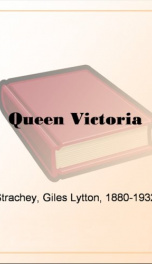
Queen Victoria
Series:
Unknown
Year:
Unknown
Raiting:
1/5
The James Tait Black Memorial Prize-winning biography by Giles Lytton Strachey, a British historian, biographer and critic. Though known for his ironical description of the Victorian era and humorous element in the biographies of famous personalities, Strachey expressed here grudging respect for the queen, instead of his usual biting irony.
Show more
add to favoritesadd In favorites
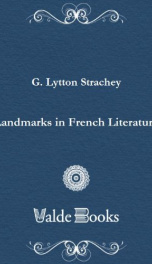
Landmarks in French Literature
Series:
Unknown
Year:
Unknown
Raiting:
1/5
Landmarks in French Literature belongs to the pen of an outstanding British author Giles Lytton Strachey (1880–1932). This book is the first book that was written by him and it was published for the first time in 1912. It is devoted to the description of French literature. And the book is very detailed and thorough. It should be recommended to all readers who want to learn more about this subject.
Show more
add to favoritesadd In favorites
Book list

Queen Victoria
Series:
Unknown
Year:
Unknown
Raiting:
1/5
The James Tait Black Memorial Prize-winning biography by Giles Lytton Strachey, a British historian, biographer and critic. Though known for his ironical description of the Victorian era and humorous element in the biographies of famous personalities, Strachey expressed here grudging respect for the queen, instead of his usual biting irony.
Show more
add to favoritesadd In favorites

Landmarks in French Literature
Series:
Unknown
Year:
Unknown
Raiting:
1/5
Landmarks in French Literature belongs to the pen of an outstanding British author Giles Lytton Strachey (1880–1932). This book is the first book that was written by him and it was published for the first time in 1912. It is devoted to the description of French literature. And the book is very detailed and thorough. It should be recommended to all readers who want to learn more about this subject.
Show more
add to favoritesadd In favorites
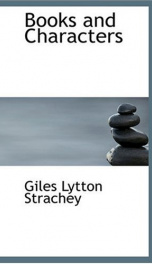
Books and Characters
Series:
Unknown
Year:
Unknown
Raiting:
2/5
From Giles Lytton Strachey, a British an English biographer and critic known for his satire of the Victorian Era. Published in 1922, the book offers an account of life and work of Racine, Sir Thomas Browne, Shakespeare, Madame du Deffand, Voltaire, William Blake, Henry Beyle, Lady Hester Stanhope and Thomas Creevey.
Show more
add to favoritesadd In favorites
What readers are saying
What do you think? Write your own comment on this author!
write a commentif you like Strachey Giles Lytton try:
readers also enjoyed
What readers are saying
What do you think? Write your own comment on this author!
write a commentif you like Strachey Giles Lytton try:
readers also enjoyed
Do you want to read a book that interests you? It’s EASY!
Create an account and send a request for reading to other users on the Webpage of the book!


